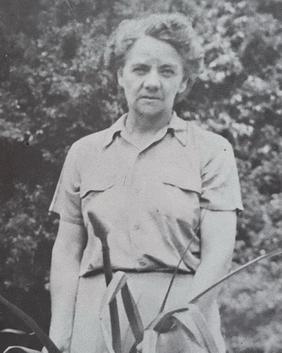Eileen Adelaide Bruce facts for kids
Quick facts for kids
Eileen Adelaide Bruce
|
|
|---|---|
 |
|
| Born | 15 February 1905 |
| Died | 1955 |
| Occupation | Botanist, botanical collector |
| Employer | |
Eileen Adelaide Bruce (born February 15, 1905, in Petersham, London – died October 6, 1955, in London) was an English scientist. She was a taxonomist and a botanist. A taxonomist is someone who studies how to classify living things. A botanist studies plants.
Contents
Life and Work
Eileen Bruce studied at the University College London. After finishing her studies, she started working at Kew Gardens in 1930. Kew Gardens is a very famous botanical garden in London.
Serving During World War II
In 1941, during World War II, Eileen joined the Auxiliary Territorial Service. This was a women's branch of the British Army. She became an officer and helped with the Anti-Aircraft Command. This group worked to defend against enemy planes.
Botanical Work in South Africa
After the war ended, Eileen moved to Pretoria, South Africa, in 1946. She worked at the South African National Herbarium. A herbarium is like a library for dried plant specimens.
While in South Africa, she studied many different plant groups. She focused on the Lamiaceae family, which includes mint plants. She also worked on improving the classification of the Kniphofia genus. These plants are often called "red hot pokers" because of their bright, spiky flowers.
Her research and findings were published in scientific journals. These included Bothalia and Flowering Plants of Africa.
Return to Kew Gardens
In 1952, Eileen returned to Kew Gardens in London. She continued her important work on plant families. She studied the Pedaliaceae and Loganiaceae families.
She also helped write for the Flora of Tropical East Africa. This is a large book series that describes all the plants found in East Africa. Her work was also published in the Kew Bulletin, another scientific journal.
Eileen Adelaide Bruce made important contributions to the study of plants. She helped us understand and classify many different species.
See also
 In Spanish: Eileen Adelaide Bruce para niños
In Spanish: Eileen Adelaide Bruce para niños

